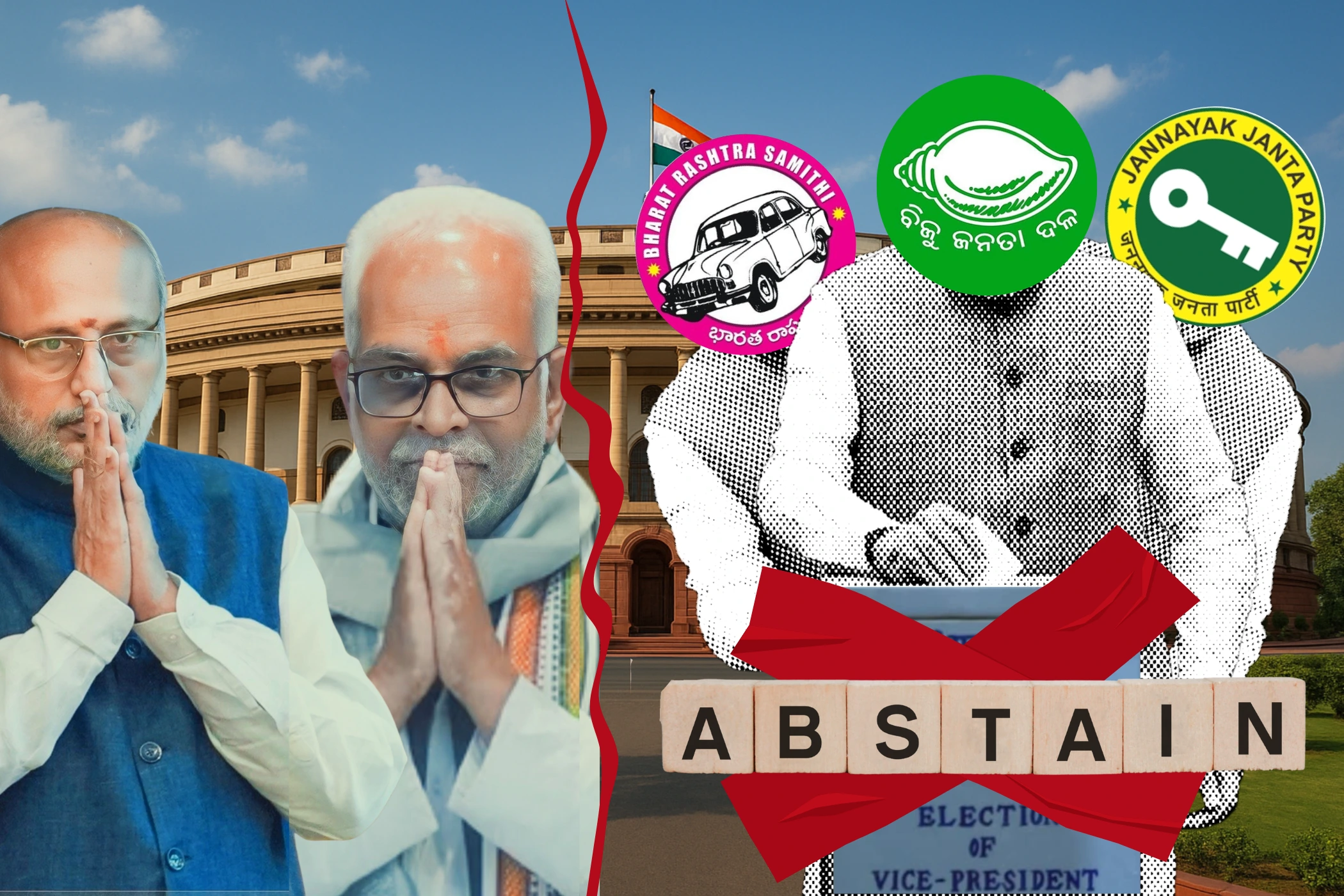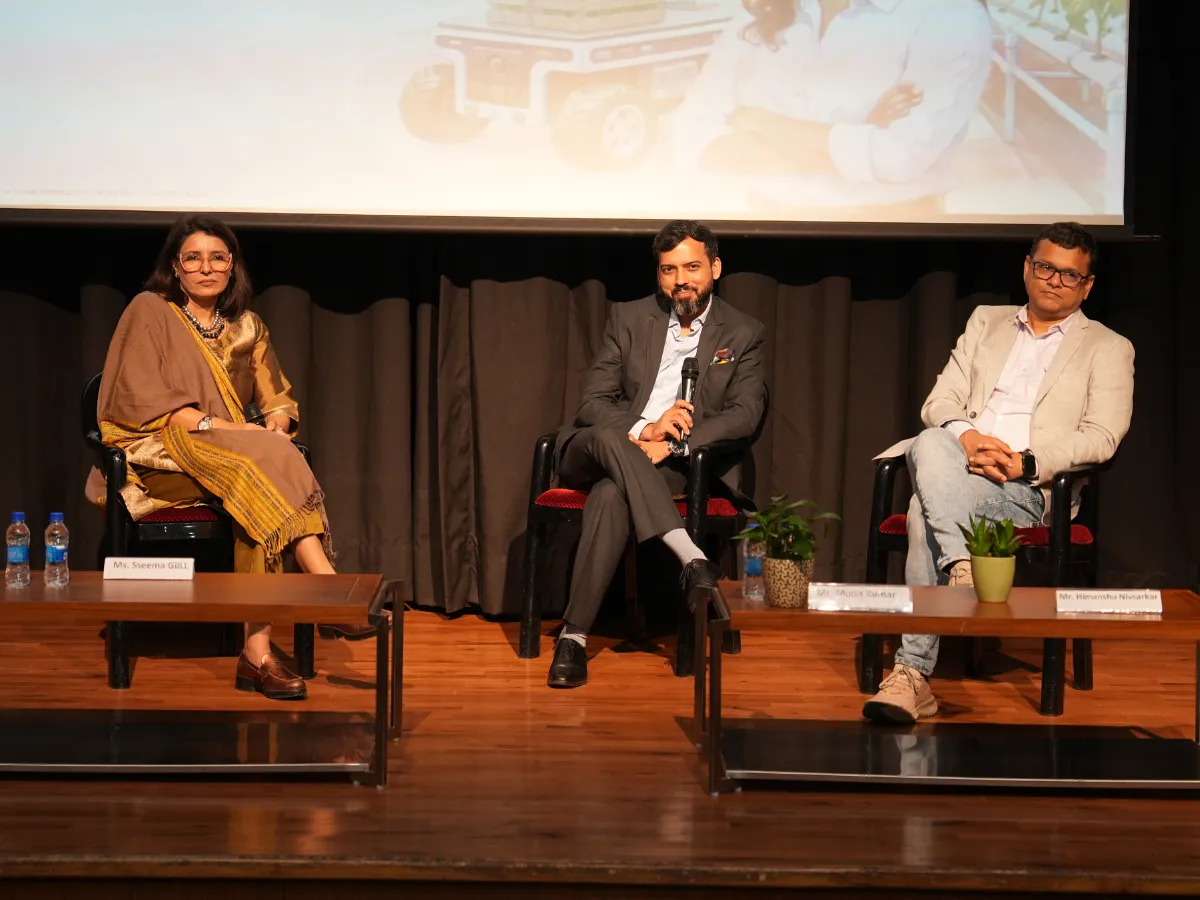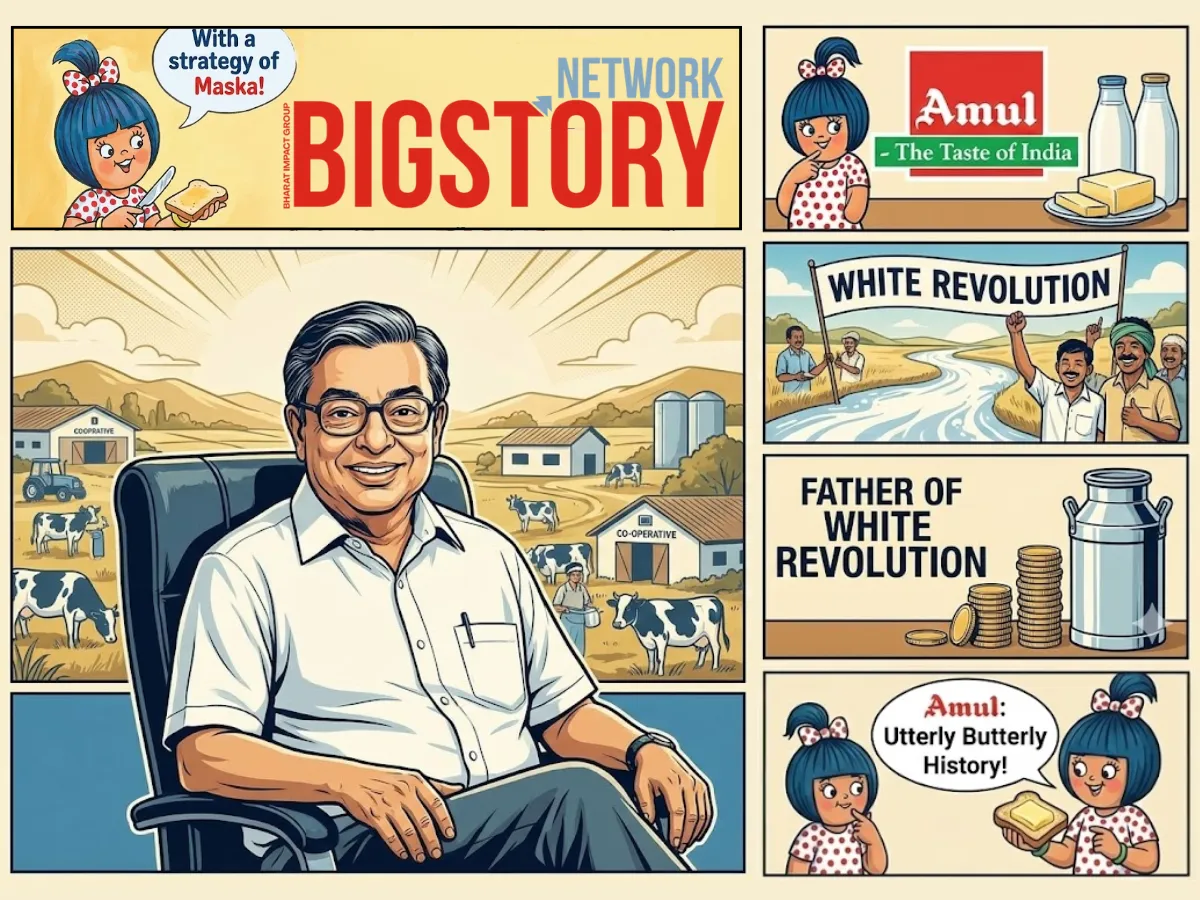Introduction
India is electing its next Vice-President on 9 September 2025, following the resignation of Jagdeep Dhankhar in July. The contest is between C.P. Radhakrishnan (NDA nominee and former Jharkhand Governor) and Justice B. Sudershan Reddy (INDIA bloc nominee and former Supreme Court judge).
But the real headline is the abstention of three influential regional parties — the Biju Janata Dal (BJD), the Bharat Rashtra Samithi (BRS), and the Shiromani Akali Dal (SAD). Together, their 12 MPs will not participate, making abstention itself a political statement in the Vice President Election 2025 India.
Context of the Vice-Presidential Election 2025
- Date: 9 September 2025
- Reason: Office vacant after Vice-President Dhankhar’s resignation on 21 July 2025 due to health concerns.
- Electoral College: Constitutionally 788 MPs (543 Lok Sabha + 233 elected Rajya Sabha + 12 nominated Rajya Sabha). Present strength at polling: 782 MPs due to vacancies.
- Candidates:
- C.P. Radhakrishnan (NDA)
- Justice B. Sudershan Reddy (INDIA bloc)
The NDA is projected to secure 420+ MPs, while the INDIA bloc is expected around 320 MPs. Abstentions will narrow the total voting pool but not overturn the likely outcome.
Why the Abstention Move Is Notable
High-profile constitutional elections usually see parties take clear positions. This time, however, abstention serves multiple purposes:
- To signal independence from both national blocs,
- To highlight local grievances on a national platform,
- To deny the ruling NDA a sweeping mandate similar to 2022, when Jagdeep Dhankhar won with 528 votes.
Who Abstained and Why
BJD’s Neutral Stand
- 7 MPs abstaining
- Following its long-standing policy of equidistance, BJD declared neutrality.
- Rajya Sabha MP Sasmit Patra stated: “The BJD remains equidistant from both the NDA and the INDIA Alliance. Our focus is solely on the development and welfare of Odisha’s 4.5 crore people.”
- Despite internal debate, party chief Naveen Patnaik opted to abstain rather than risk aligning with either side.
BRS and Farmer-Related Issues
- 4 MPs abstaining (all Rajya Sabha, as BRS lost its Lok Sabha presence in 2024).
- Working president K.T. Rama Rao said abstention was a protest against Telangana’s farmer distress and urea shortage: “This decision is an expression of anguish of Telangana’s farmers over the shortage of urea.”
- BRS blamed both the Centre and the Congress-led state government for failing to resolve the crisis.
SAD’s Alliance Considerations
- 1 MP abstaining
- SAD tied abstention to Punjab’s devastating floods, saying nearly one-third of the state remained submerged and relief was inadequate.
- The party stated: “Neither the state government nor the Centre have come forward to help Punjabis in any way.”
- Abstention also signals SAD’s cautious recalibration of ties with national parties, especially the BJP.
Historical Context
BJD
- 2012: Abstained
- 2017: Supported opposition nominee Gopalkrishna Gandhi
- 2022: Backed NDA’s Jagdeep Dhankhar
- 2025: Abstaining again → a clear pattern of strategic neutrality and tactical shifts.
BRS (formerly TRS)
- 2022: Supported the opposition bloc nominee against the NDA candidate
- 2025: Abstaining → reflects reduced strength (4 MPs) and focus on farmer protests.
SAD
- No detailed VP election record available, but well-known for issue-based protests and symbolic boycotts, consistent with the 2025 abstention.
Regional Politics at Play
- Odisha (BJD): Abstention reinforces its image of equidistant diplomacy, emphasizing state development over national blocs.
- Telangana (BRS): Farmers’ issues, especially the urea shortage, gave BRS a reason to signal protest while avoiding bloc alignment.
- Punjab (SAD): Flood devastation provided the backdrop for SAD’s moral protest, reflecting its Punjab-first politics.
These moves show how local crises shape national-level decisions, underlining the federal nature of Indian politics.
Impact on the Election Math
- NDA projected strength: ~420+ MPs
- INDIA bloc projected strength: ~320 MPs
- Abstentions: 12 MPs (7 BJD, 4 BRS, 1 SAD)
While abstentions will not change the winner, they may:
- Narrow the NDA’s victory margin compared to 2022,
- Deny it a perception of an overwhelming mandate,
- Underscore abstention as a symbolic political weapon.
Conclusion
The abstentions of BJD, BRS, and SAD in the Vice Presidential Election 2025 India highlight how not voting can itself be a calculated strategy.
- BJD reinforced its neutral equidistance stance.
- BRS transformed abstention into a farmer protest.
- SAD used it to spotlight flood relief failures.
Together, they show the growing importance of regional parties in shaping national narratives, even in constitutional elections where outcomes are numerically predictable.
 Brajesh Mishra
Brajesh Mishra







 Trending Now! in last 24hrs
Trending Now! in last 24hrs